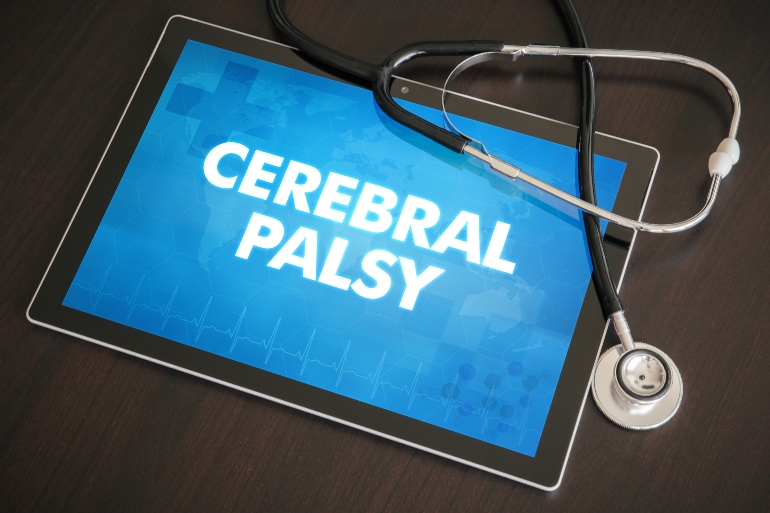Cerebral Palsy Treatment: Know Your Options

Every hour, somewhere in the United States, a baby is born with cerebral palsy. It is the most common birth injury, affecting approximately 1 out of 345 children. Because there is no cure, millions of children and adults have physical and cognitive disabilities that last throughout their lives. Cerebral palsy treatment is available, but understanding the disorder and its symptoms is taking the first step.
What is cerebral palsy?
Cerebral palsy is an umbrella term for several chronic disorders that affect movement, posture, and balance. Children typically exhibit symptoms soon after birth or during the first few years. The effects can range from mild to severe, depending on the individual. Most people have some form of physical impairment from the condition. In some cases, cerebral palsy also causes cognitive deficiencies. Oftentimes, it is difficult to determine what caused an infant to be born with the disorder. However, sometimes it is the result of a medical mistake that deprives an infant of oxygen during pregnancy, labor or delivery.
What are the symptoms of cerebral palsy?
While everyone is different, there are some common symptoms that may indicate an infant or child has cerebral palsy:
- Problems performing fine motor tasks such as writing or using scissors
- Difficulty with gross motor activities such as walking and running
- Involuntary, jerky or spastic movements
- Decreased or increased muscle tone, causing a baby to appear “floppy” or stiff
- Unusual posture that may favor one side of the body
- Abnormal reflexes
- Jerky or spastic movements
Cerebral palsy treatment
While cerebral palsy is a lifelong condition that cannot be cured, certain cerebral palsy treatment may help some patients experience fewer or reduced symptoms. Medical professionals agree that children generally fare better when they start treatment early.
In Illinois, services for children with special needs ages 3-21 are available at no cost through the public school system. If your child is developmentally delayed or has been diagnosed with cerebral palsy, contact the Special Services department of your local school district.
Here are some of the most widely used cerebral palsy treatments:
Rehabilitative therapies
Several types of therapy, used alone or in combination, can improve the prognosis for children with cerebral palsy.
- Physical therapy
Physical therapists use various exercises and activities to maintain or improve muscle strength, balance, and movement.
- Occupational therapy
This type of therapy helps children (and adults) improve fine motor skills needed for daily activities such as eating, dressing, and writing.
- Speech and language therapy
Speech-language pathologists can help children learn to speak more clearly. If needed, they teach children and their parents how to use sign language or assistive communication devices. Speech therapists also address issues with eating and swallowing.
- Social/Recreational therapy
Children can benefit in a variety of ways from taking part in art programs, cultural activities, and sports, such as therapeutic horseback riding.
Adaptive equipment
Some children need braces or splints to help improve walking or loosen stiff muscles. Others may require walkers, canes, special seats, scooters, or wheelchairs. Those with communication deficits may benefit from using special computer programs or voice synthesizers.
Medication
Physicians use a variety of medications as cerebral palsy treatment. Some help relax stiff muscles and reduce abnormal movement or control pain. Some drugs are taken orally while others are injected into the affected muscles. Certain medications are administered through a pump implanted near the spinal cord. Additionally, injecting Botox into the salivary glands can help reduce drooling.
Surgery
A doctor may recommend surgery for children with severe symptoms. Surgical procedures can lengthen tightly contracted muscles, correct spinal abnormalities or reposition arms, legs or hips. Surgery can be performed on the bones, joints, muscles or nerves, depending on the situation.
If you suspect your child’s cerebral palsy was caused by a medical mistake, contact us. Our experienced and compassionate birth injury lawyers will fight to win the compensation you and your family deserve.
Medical malpractice law is complicated, but finding the right lawyer is simple.
Call 1-800-MALPRACTICE today for a free, no-obligation consultation.
Sources:
https://www.mayoclinic.org/diseases-conditions/cerebral-palsy/diagnosis-treatment/drc-20354005
https://www.nichd.nih.gov/health/topics/cerebral-palsy/conditioninfo/treatments
https://cparf.org/what-is-cerebral-palsy/facts-about-cerebral-palsy/


